Last Updated on August 5, 2021
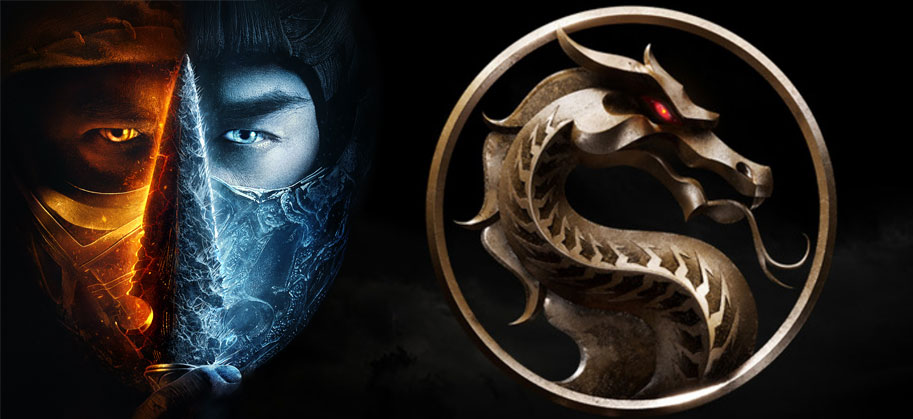
Back in November of 2019, mere months before the coronavirus pandemic would perform a fatality on most major Hollywood film productions, I was invited to Adelaide, Australia to visit the set of Warner Bros. and New Line Cinema's Mortal Kombat. As a major fan of the Mortal Kombat brand since its inception, I was a natural fit for this assignment and had arrived on the secluded set both buzzing with anticipation and skeptical as to how the film’s director, Simon McQuoid, and his talented team, would reinvigorate such a storied franchise for the big screen.
I was only 11-years old when the first Mortal Kombat video game cabinet burst onto the scene at my local arcade. Having previously cut my teeth on fighters like Karate Champ, WWF Superstars, Kung Fu Master, and Street Fighter II: The World Warrior, I felt well-prepared for whatever the NetherRealm Studios-developed fantasy-themed brawler could dish out. I could not have been more wrong.
Upon placing my quarters into the slot and selecting my fighter, Sub-Zero, I quickly learned that fighting games had leveled up. Suddenly, I was thrust into a tournament of champions, where blood seeped into the cracks of broken streets and gruesome fatalities were introduced as a merciless way to vanquish my fallen foes. So violent was this brutal ballet of fists, fury, and finishing moves, that Mortal Kombat became a key component in the establishment of the ESRB – an organization that assigns ratings to consumer video games.
27-years later, and after the debut of two major motion pictures based on the Mortal Kombat property — the first being a cult classic, while the other remains an awfully good time for those who delight in cringe cinema — New Line Cinema is gearing up with Mortal Kombat to unleash a reboot that could change the way Hollywood looks at video game adaptations. Get ready, because we're in for one hell of an R-rated take on the classic franchise, featuring some of the greatest martial artists from across the globe as its wayward warriors. Round 1! Fight!
Below are some observations, tidbits, and theories from my time on set with the cast and crew. If you want to know as much about the movie as possible before it lands in theaters and on HBO Max on April 16th, feel free to continue and familiarize yourself with all the brutal details.
1. According to Mortal Kombat producer E. Bennett Walsh, Mortal Kombat has been in development since 2010, roughly a year after Warner Bros. acquired the franchise from Midway Games in 2009.
2. With close to 100 characters existing throughout Mortal Kombat lore, the goal is for Mortal Kombat to serve as a film franchise-starter, thereby establishing a Mortal Kombat Universe akin to the DCEU or the Marvel Cinematic Universe.
3. Authenticity has been a major concern for the filmmakers of Mortal Kombat, and so one of the goals of the film was to cast actors that are of the same heritage as their MK counterparts.
4. The same goes for the characters and their fighting styles. In staying true to the game, every character in Mortal Kombat uses their traditional fighting styles in the film, meaning there’s potential to see your favorite combos or brutalities recreated as a part of the action.
5. Executive Producer E. Bennett Walsh says there are literally hundreds of Easter eggs for hardcore fans of the franchise on display throughout the film.
6. At one point in the production process, director Simon McQuoid was advised to rethink the violence featured in the film to avoid being slapped with an NC-17 rating.
7. McQuoid used music composed by Benjamin Wallfisch (Blade Runner, Dunkirk) to convey his vision for the film to potential cast members. Rather than try and convince them to join up, he simply played them the new arrangement and let the music be his method of persuasion.
8. The music for this film is far more traditional than anything you’ll hear on the original Mortal Kombat (1995) soundtrack. The new song includes exhilarating orchestral arrangements accompanied by thundering taiko drums, among other instruments. While it's not the techno-oriented banger that opened Anderson's 1995 film, it's an adrenaline-pumping anthem nonetheless.
9. Early in the development process, the movie was meant to be much darker, with some likening the tone to Alex Proyas's The Crow.
10. The film was only 60% complete at the time of my visit, leaving plenty of time for reshoots, rewrites, and surprise character cameos.
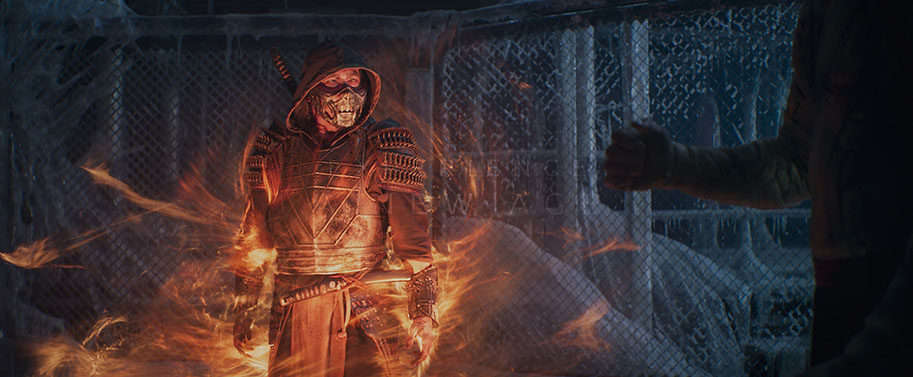
11. Mortal Kombat story canon is considered to be the “absolute bedrock” of McQuoid’s plans for the new film.
12. Mortal Kombat shot “tons of stuff” on-location, and abandoned the idea of using green screen technology whenever possible.
13. Though he’s considered to be one of Mortal Kombat’s most ruthless and lethal fighters, Kano provides a majority of the comedy throughout the movie.
14. Though he was never a rabid fan of the series, McQuoid did play Mortal Kombat when it first arrived in arcades (circa 1992).
15. To make up for his lack of Mortal Kombat knowledge, McQuoid surrounded himself with fans of the series who knew far more than he did during the film’s production process.
16. Set Designer Naaman Marshall drew inspiration from a variety of iconic stages found throughout the Mortal Kombat franchise while working on the film. While visiting the set, we toured alternate versions of The Bridge and The Pit, as well as a location that was similar to Shang Tsung’s Throne Room, though it was more like a Fighter’s Arena.
17. At some point during the film’s production, McQuoid lost track of how many gallons of blood were used to make the movie. To his knowledge, a significant number of drums worth of the red stuff were used to create the desired level of violence in Mortal Kombat.
18. The film opens in 15th Century Japan, with Joe Taslim (Sub-Zero) and Hiroyuki Sanada (Scorpion) engaged in an intense battle.
19. Executive Producer E. Bennett Walsh explained to us that McQuoid requested that practical effects should be used for the film whenever possible. While the movie does contain some CGI elements, much of what we’ll see was created using prosthetics, makeup, and detailed props.
20. E. Bennett Walsh attests that he’s never watched any of the previous Mortal Kombat movies before working on the new film.
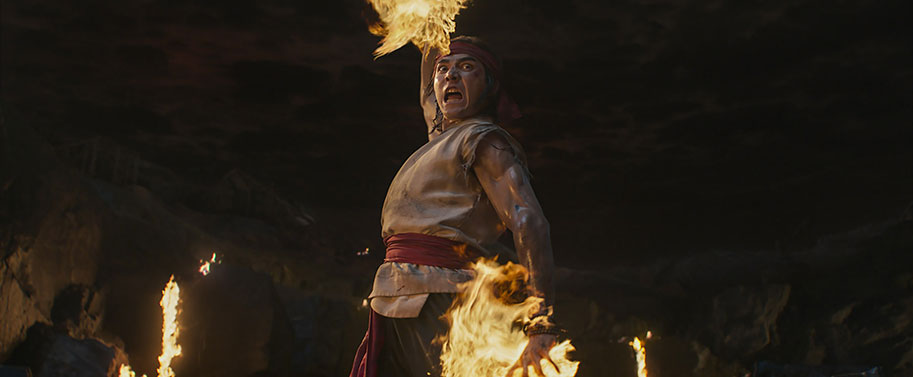
21. While the trailer for Mortal Kombat reveals several characters beyond the core cast – such as Reptile, Goro, and hints at the arrival of Shao Khan – I can confirm that more iconic fighters from the franchise will make an appearance.
22. For all of you Mileena purists out there: have no fear. The effects team plans to feature a more dramatic take on her razor-sharp-toothed maw. After all, not everything is revealed in trailers.
23. While visiting the makeup department, I laid eyes on a detailed chart that included explicit details about every character in Mortal Kombat, including how and if they die in the film. The purpose of the chart was to track a character’s battle damage throughout the film and provide the effects team with a roadmap for what prosthetics should be used from day-to-day, and for whom.
24. Also while visiting the makeup department, we were shown concept art for a scene that takes place after Sub-Zero has seemingly attacked the entire population of a small village.
25. While studying the image of the frozen village, I could see whole families huddled together while cowering in fear, covered from head to toe in ice. No one was safe from Sub-Zero’s wrath at this moment, including small children.
26. Disturbingly enough, laying next to the concept art on a nearby shelf was a model statue of one of the frozen children. Locked into a fetal position, the child was six years of age and completely covered in ice. It was an horrific prop indeed.
27. Reptile’s deadly tongue will be represented by both a physical prop as well as CGI in the film. I got to hold the physical version, which is a long, barbed, silicon-based prosthesis. It was very Lovecraftian in nature, like a single tendril cut from an Eldritch horror. We were told that the barbs are where Reptile stores his poison, which is why he’s able to spit the toxicant at his enemies.
28. Kano was originally introduced as a Japanese-American before being portrayed with an Australian accent in the Mortal Kombat animated series. This prompted Paul W.S. Anderson to present the character as Australian in the first Mortal Kombat movie, as played by English actor Trevor Goddard. This time out, Kano is played by Josh Lawson, a legit Australian actor.
29. Every piece of armor featured in the film has a “hard” version and a “soft” version. The “hard” versions weigh about 20 kilos and are playfully referred to as “beauty suits,” because they are used for close-up shots.
30. During pre-production, photos of every character and all of their costume variants were printed up and studied before designing costumes for the film.
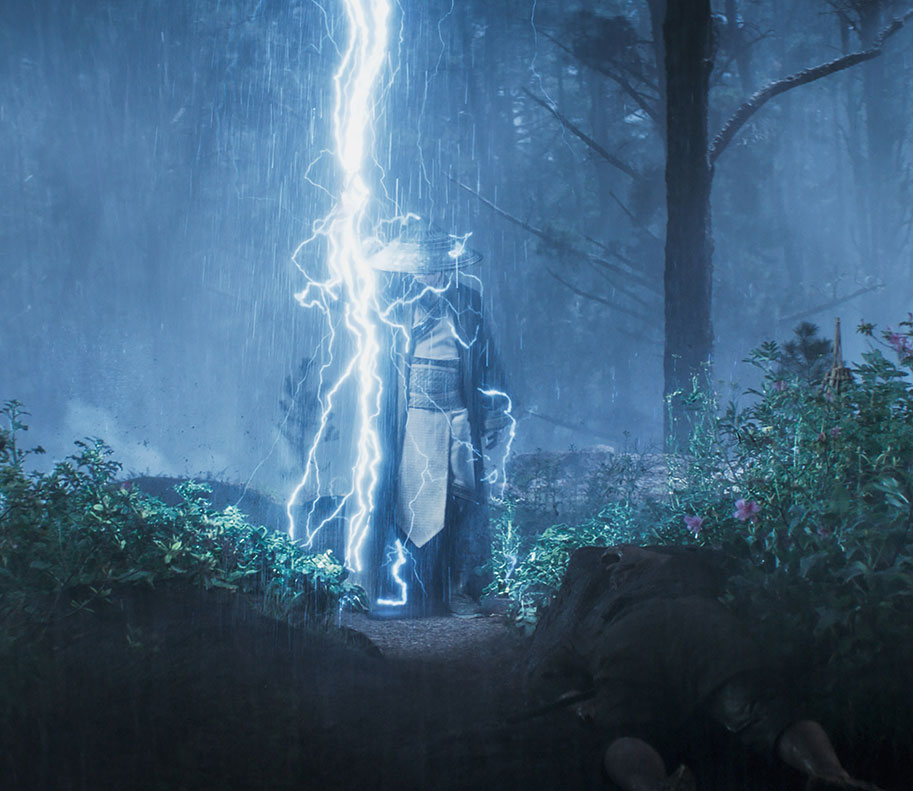
31. The goal was to remain faithful to the source material while also allowing the costume design team to leave their own mark.
32. Lewis Tan drew inspiration for his Cole Young character from some of his favorite MMA fighters, including Jorge Masvidal.
33. Tan had never fought MMA-style before signing onto Mortal Kombat, but his knowledge and training in the arts of Kickboxing and Muay Thai made him a quick study.
34. Cole Young and his daughter Emily (Matilda Kimber) share a unique bond. In addition to being her father’s biggest supporter, Emily is also Cole’s coach.
35. Lewis Tan believes that the fights in Mortal Kombat will blow people’s minds largely because the characters are being played by martial artists who can really fight. There’s no need to call “cut” and swap an actor for a stuntperson.
36. Cole Young, while not based on an existing Mortal Kombat character, does have connections to the MK mythology. These connections will be explored in the new film.
37. At one point, Rain was a part of the movie. However, he was dropped from the plot after some felt he was too similar to Reptile.
38. Goro, the Prince of Shoken, will be CGI-animated in the new Mortal Kombat film.
39. Since Goro is CGI-animated, McQuoid would often place a wooden standee of the character just outside of the camera’s eye for the actors to interact with. It looked like something you could buy at a comic-con event, only it was huge and very intimidating.
40. “One of the things we’ve been talking about throughout development is respect. Respect for the fans. Respect for the characters, and respect for the canon of the game,” says McQuoid about the authenticity of his Mortal Kombat film.
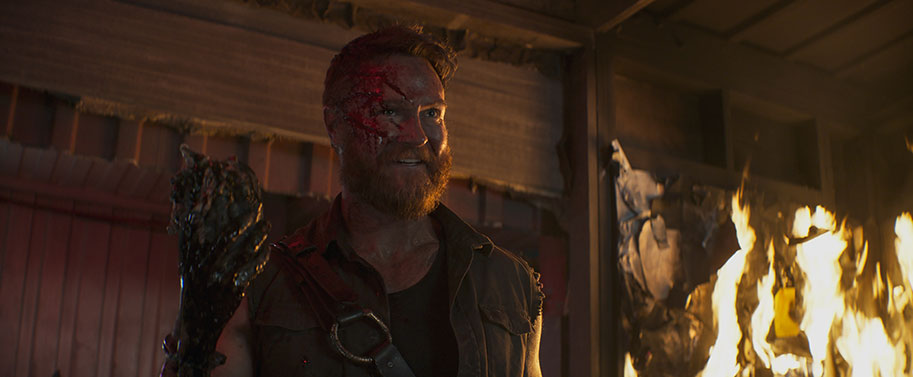
41. While this take on Mortal Kombat is dark, violent, and bloody, McQuoid did say there will be some humor and levity in the film.
42. The props department considered arming Kano with Bowie knives, but ultimately didn’t want to make the character appear “too Crocodile Dundee.”
43. At one point, the effects team tried giving Kano something of a “Terminator-style” eye to represent the cybernetics beneath his skin. When it didn’t achieve the desired look, the design team went back to the drawing board.
44. Every actor working on Mortal Kombat wanted to throw down with Joe Taslim, and some were disappointed upon finding out that the script didn’t call for them to share a fight scene.
45. Both Scorpion and Sub-Zero will receive major arcs throughout the new film. That said, some elements of their complicated histories will no doubt be saved for an inevitable sequel or spin-off.
46. Joe Taslim told us that one of the most exciting aspects of making Mortal Kombat is that the film will be seen by people all over the world. “People are going to see it from South Sumatra to South Africa, and they’re going to feel represented.”
47. Lewis Tan turned down six projects in 2019 alone before signing on to play Cole Young in Mortal Kombat.
48. Max Huang had originally auditioned for the part of Liu Kang, but after the role went to Ludi Lin, he was offered the character, Kung Lao.
49. Huang jumped at the opportunity to portray Kung Lao and immediately made a replica of the character’s iconic Razor-Rimmed hat to practice with.
50. During my time with Ludi Lin, he offered my favorite take on why the multiculturalism of the new Mortal Kombat movie is so important: “I’ve never worked with someone [Simon McQuoid] who’s so serious about being authentic for another culture. In my career, what gives my work meaning is often seen as tokenism in minorities in Hollywood films. Why can there only be one Highlander? 60% of the world is Asian. A quarter of the world is Chinese. The thing about Mortal Kombat that grips me is how there have been 11 different iterations because of its characters. It’s such a diverse mesh of characters, and they’re all so interesting. In this movie, there are so many different types of people, different ethnicities from different origins. If you want your film to carry throughout the world, which is all films right now, you want to represent the world in the right way. Throughout the world, there are no token agents.”
For more about the new Mortal Kombat, including interviews with the director, cast, and crew, be sure to check out our extensive coverage:
Mortal Kombat Interviews: Director Simon McQuoid and producer E. Bennett Walsh
Mortal Kombat Interviews: Lewis Tan, Joe Taslim, Ludi Lin, and more








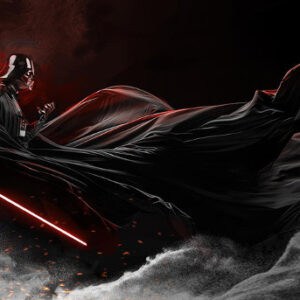
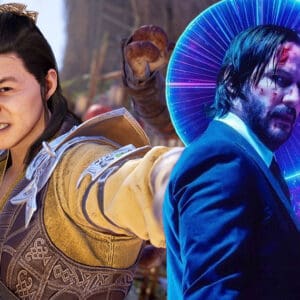



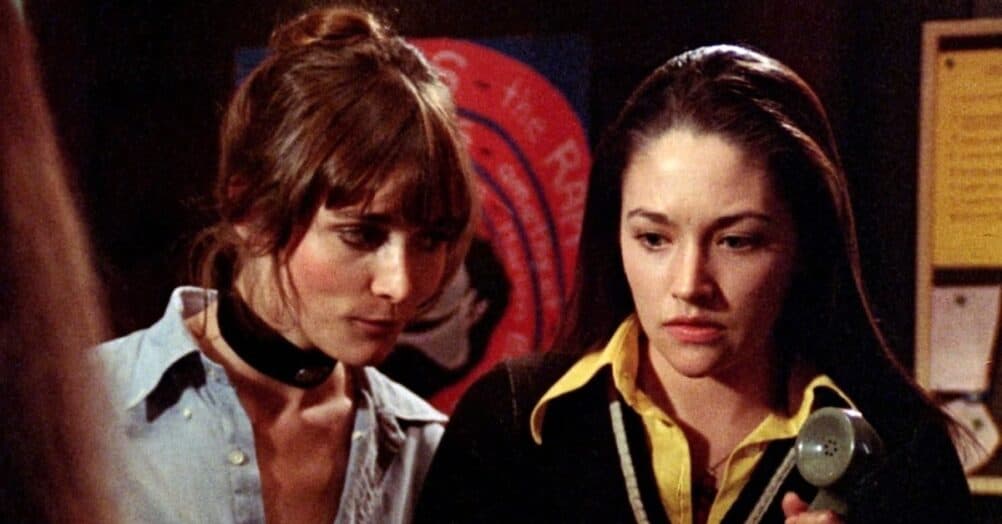






Follow the JOBLO MOVIE NETWORK
Follow us on YOUTUBE
Follow ARROW IN THE HEAD
Follow AITH on YOUTUBE